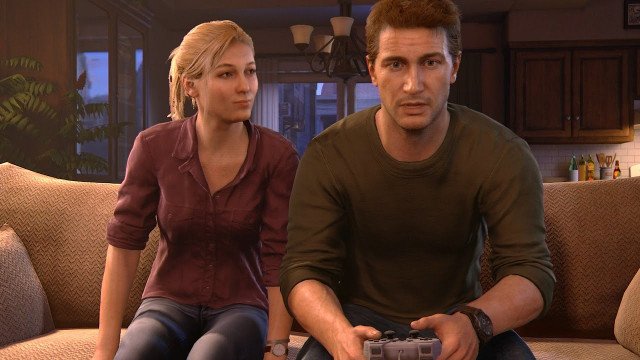Respected video game storyteller Amy Hennig recently made some interesting statements about the state of storytelling in AAA games.
Speaking at Reboot Develop Blue last week, Amy Hennig opened up about some of the changes in the industry and how these affected storytelling. “We’re at an interesting crossroads in the industry, and I’m at a personal crossroads in terms of figuring out where I want to land next,” she states. “I feel that those two things are related a little bit.”
Known in part for her work on the first three Uncharted games, Hennig used these to illustrate her point. Players could finish the first Uncharted in about eight to nine hours, due to being a pure single player experience with only a few collectibles. Uncharted 4 on the other hand now demands much more time.
“Compare that against Uncharted 4, which is double the size,” Hennig says. She then goes on to mention other AAA titles from Sony. “The same thing for God of War versus God of War 2018, the same thing for Insomniac games from the mid-2000s versus Spider-Man. Across the board, we’ve doubled everything in size; we’ve also doubled our development time, and doubled our team sizes — probably more than doubled in each of these cases — and yet our price-point hasn’t changed.”
She states that a lot of the pressures within the industry come from this increase in size. That, and the fact that games still come at a fixed $60 price point. Publishers have been hesitant to raise the prices for games and players would likely be just as hesitant to accept it.
Hennig states that, “If you made a finite game, it was perceived as a rental, online forums would say, y’know, ‘Rent it, or buy it used, or buy it and sell it back.'” Because of this, publishers now have to ask themselves how to create more value for the game. Downloadable content and the rise of games as a service are a direct result of this according to her.
As a result of this, storytellers like her are no longer creating a “finite and intentionally authored” narrative.
“We’re in a world where we’re not even making finite games, and when we are they’re 20, 40 or 100 hours, and the common wisdom is that most players don’t finish them,” she opines. “We have these statistics inside the industry; some publishers, they realize that 10% of their audience is going to see the entire story. And that’s upsetting.”
The crossroads that Hennig then mentions are how the kind of finite gaming experience she used to write seems to be dying out. “I just think that what dismays me right now is that it doesn’t feel like we’re making the whole spectrum of games that we could be making — at least not in mainstream, publishing and developing, AAA.”







